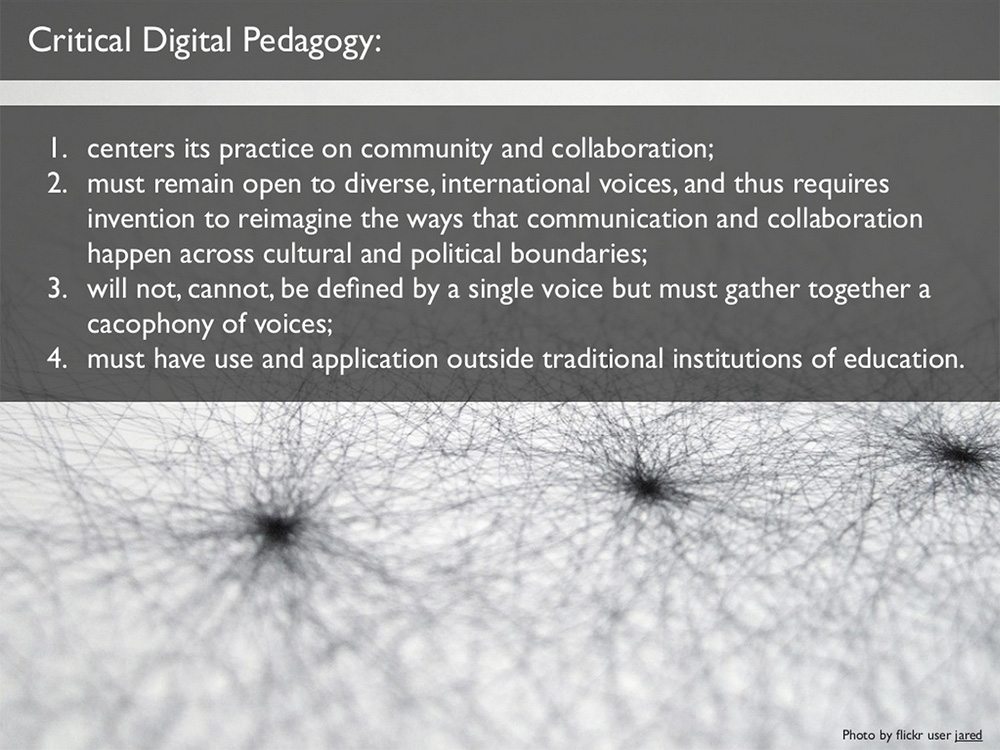
What Are The Characteristics Of Critical Digital Pedagogy?
by TeachThought Staff
“Pedagogy is not just a delivery device for the digital humanities. It should be at the core of what the digital humanities is as an academic discipline.”
Jesse Stommel is an Assistant Professor of Digital Humanities at the University of Wisconsin-Madison, and this idea has a lot to it.
In this idea, Stommel (who was one of our Grow 18 keynote speakers) shifts the practice of pedagogy as a vehicle for ‘teaching’ to something more whole–considering the humanities not as a school of thought or academic genre, but rather a reason for being. Humanities teach. The ‘digital’ reaches. Therefore, the digital humanities should reach and teach as a matter of concept and design. That’s what they’re for.
Stommel offers four characteristics of critical digital pedagogy. Put another way, these are four things we might notice if digital teaching and learning is doing what it’s supposed to do.
4 Characteristics Of Critical Digital Pedagogy
1. It centers its practice on community and collaboration
2. Must remain open to diverse, international voices, and thus requires invention to reimagine the ways that communication and collaboration happen across cultural and political boundaries
3. Will not, cannot, be defined by a single voice but mus gather a cacophony of voices
4. Must have use and application outside traditional institutions of education
The presentation is mostly macro thinking of what education can be, quoting from Freire, Dewey, and even Emily Dickinson to make the case for what’s possible in a modern–digital and connected–learning environment.
Definitely worth a look as you consider what the results of your practice should ultimately ‘do’ in the real world–and the kinds of things it should ‘break.’
